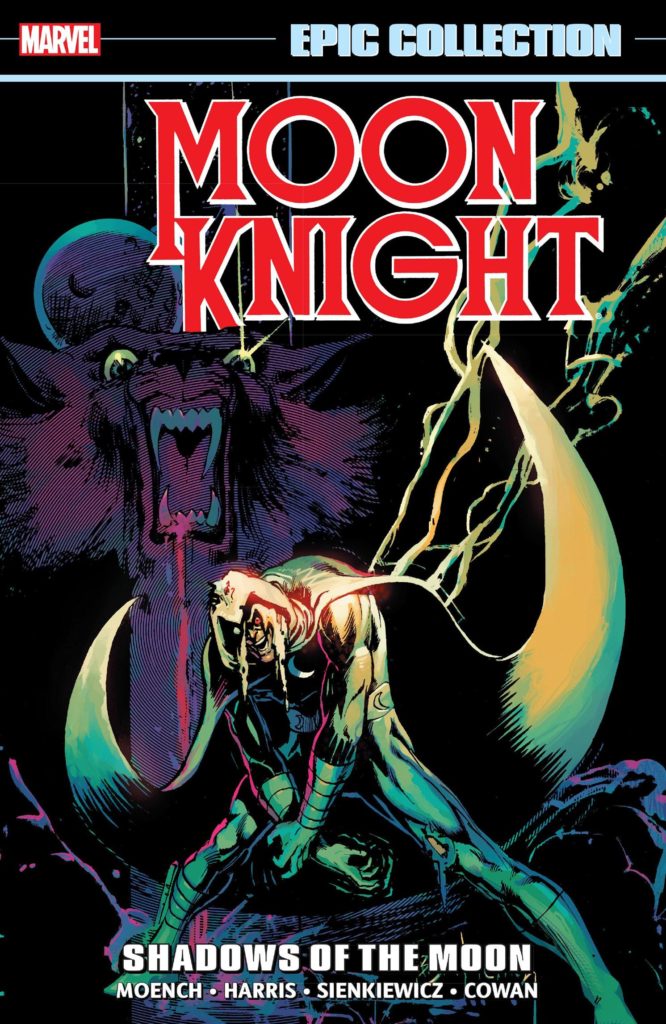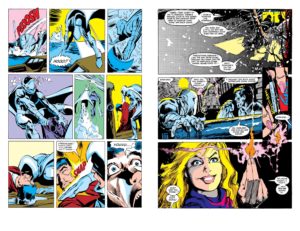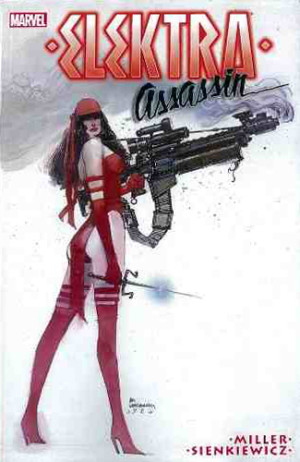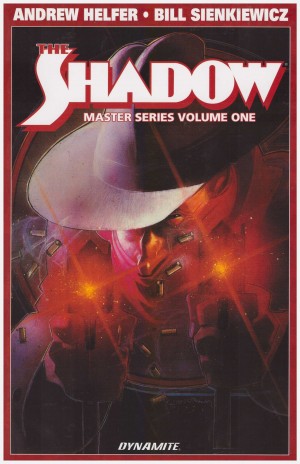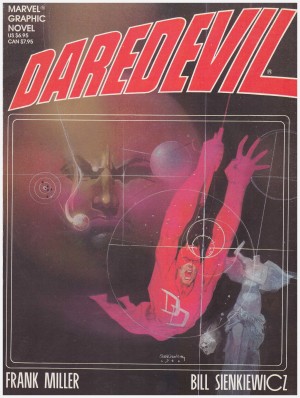Review by Karl Verhoven
This second Moon Knight Epic Collection covers 1981 and 1982, and takes Bill Sienkiewicz from an exceptionally talented artist still finding his way to one on the verge of letting go and discovering his style. The difference can be seen from the already good art providing the left hand sample page, Sienkiewicz benefiting from the slightly rougher inking of Klaus Janson and the right hand page from near the end of the collection. Having been enormously influenced by Neal Adams (see Bad Moon Rising), Sienkiewicz developed an innate sense for what at worst are functional layouts, and what at best are striking. Over the earlier work here there’s a sense he’s being editorially forced into discipline instead of expressing himself, whereas his covers, presented alongside the reprints feature amazing drawings. Enter ‘Bill Sienkiewicz Moon Knight covers’ into the image page of a search engine and see for yourself. This is where the individual Sienkiewicz began to emerge. Around a hundred pages into Shadows of the Moon Sienkiewicz begins inking his own pencils, and the difference is immediate. Producing the full art supplies a confidence, and Sienkiewicz begins experimenting. As with all experiments, not everything works (the villain Morpheus looks like an alien bystander from a Jim Starlin comic), but it doesn’t take long to come together, a celebratory illustration of a Mardi Gras parade pointing the way.
As Sienkiewicz became looser, Doug Moench redefines Moon Knight. He’d supplied him with three civilian identities, and then toyed with the idea of the assorted identities being a form of madness, which comes to a head when his oldest foe Bushman returns. The fall and rise arc is a little too rapid, but it’s still impressive and a sign of things to come when Moench begins to think about the psychology behind his villains. Again, the full blossoming is in the following Final Rest, but the gothic tragedy of ‘Stained Glass Scarlet’, the best story in this collection, is a taster. Moench’s captions are sometimes strained, particularly his clumsy elegy to then recently shot John Lennon, but carefully build a picture of a woman anticipating the inevitable and her resignation to it. “She enters the night as if it were her last walk”, is a resonant phrase, and as Moench unveils what Scarlet is, what seems to be a timeless tragedy plays out, eventually unexpectedly. Sienkiewicz plays his part to ensure the story drips a dark, foreboding atmosphere. The Adams influence is back for the oddness of ‘Ruling the World From his Basement’.
While in this collection Moon Knight only rarely achieves the synthesis Moench arrived at with his best artists on Master of Kung-Fu, that really was a cut above, and the archness of the strange villains he created there doesn’t hit the same notes here. Nimrod Strange and his grotesque Slayers Elite haven’t aged well.
There is work from other creators. It’s not bad, but it’s ordinary. Denys Cowan would in time take a lot from Sienkiewicz, but was a rookie in 1982, Jimmy Janes strangely Ditokesque and Vicente Alcazar plain crude at times. The writing involves Moon Knight with the Thing, which isn’t what readers of this title wanted to see, and future Moon Knight writer Alan Zelenetz works with Greg LaRocque on a short mystery, which is fine for the five pages it fills.
The collection ends with a far better return for Morpheus, Sienkiewicz taking flight and anticipation high for Final Rest.
